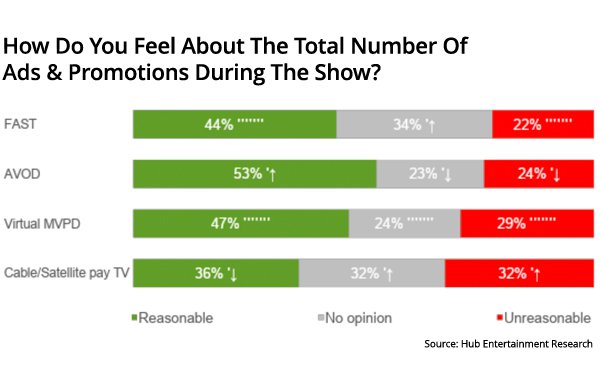
New research suggests consumers view FAST
networks comparable to that of limited advertising-supported TV streamers when it comes to advertising time in a program -- although industry estimates are that FAST average ad loads are much
higher.
One question posed to respondents is: “How do you feel about the total …